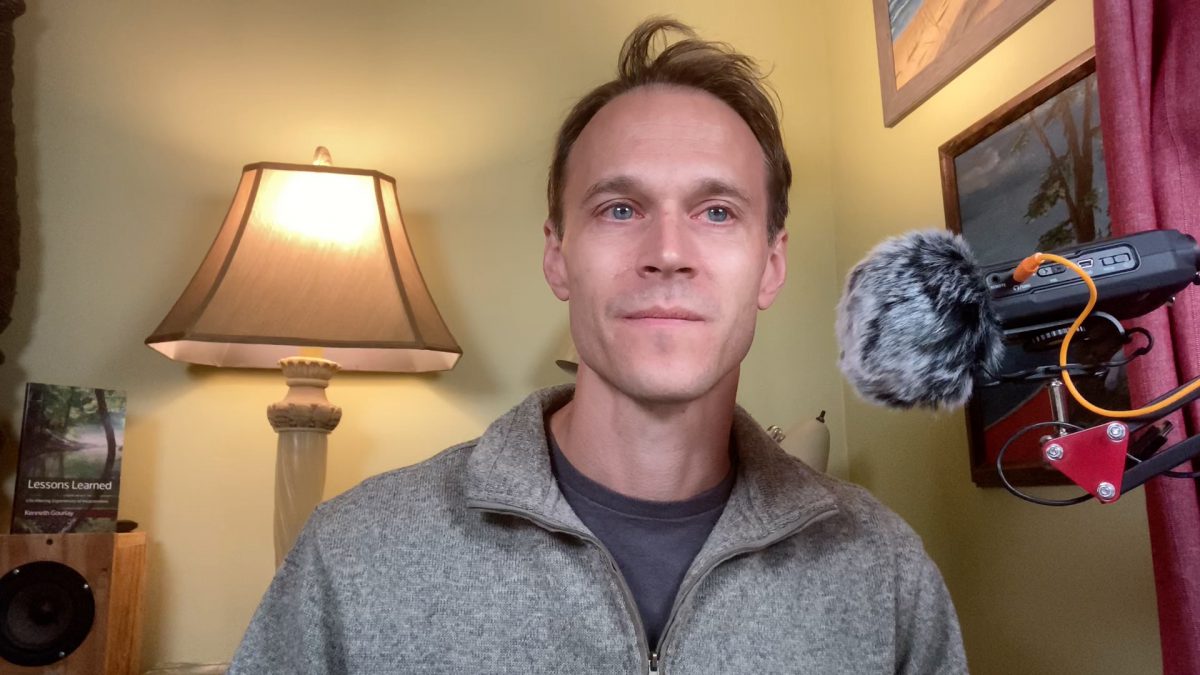If you live in the United States:
Don’t Forget to Vote
In case you didn’t hear, there is an election coming up soon! Now is the time to make sure you are registered, and to request an absentee ballot if you want to vote that way. This is a very interesting election, so I encourage everyone to participate. It is the least you can do as a citizen.
For information on how to vote, either in person or by mail, check out ballotready.org.
To see if you’re registered, go to headcount.org.
For more information or assistance, call (855) 868-3311.
This episode explores the idea that sexual categories have socially-defined meanings that are negotiated and renegotiated over time. Individuals develop their sexual self through telling their story to position themselves within these social definitions.
(Transcript)
Last week I read a really interesting PhD dissertation by David Wahl, at Iowa State University, titled Speaking through the silence: Narratives, interaction, and the construction of sexual selves. He bases his study on an idea called symbolic interactionism.
Symbolic interactionism, basically, is the theory that the labels and definitions we use to identify ourselves are constructed through a social process. It is our society as a whole that defines, for example, what it means to be male, or gay, or a virgin. And this is an ongoing process, where meanings change. They are constantly being negotiated and renegotiated, understood in new and varying ways. We individuals are not passive recipients of these definitions, though. As part of society, we each individually participate in this process of creating meaning.
Beyond a vague idea of a social conversation that develops these definitions, the research looks at individual people’s narratives that work to build a sexual self. In other words, people create their own sexual identity by telling a story. The telling is just as important as the hearing, because both work together to frame the individual within the social definitions that have been and are continuing to be developed.
The Role of Shame
Shame, and an understanding that certain behaviors are taboo or deviant, can move an individual to justify their behavior or desires. This is part the narrative creation I’m talking about. Just as an example, if a young woman has heard, growing up, that women who like sex are sluts, she might feel shame about her own sexual desires. If she is sexually active, she might frame her activity in a way that identifies her as less of a slut. She might say things like, “It’s not the sex, I just like being around another person.” Or when it comes to sexual activity, she might minimize it, saying, “It was just one time,” or “we didn’t go all the way.”
Ironically, for young men, sometimes shame works in the other direction. There might be a general narrative that sexual prowess or experience is a positive thing, a sign of status or or masculinity. So a young man might tell his own story in a way that emphasizes those aspects. So whether shame and the public narrative direct people in one direction or another, the result is that the individual builds their own narrative that positions them in their society.
Pride: A Response to Shame
Another response to shame or a potential negative repulation is to embrace it. The young woman above could, alternatively, develop her narrative in a different way. She could say, “Yeah, I’m a slut and I love it! And you should try it!” Taking pride in one’s identity, even (or especially) in the face of public shame, is often a successful way to navigate sexual stigma.
There is a long and colorful history of sexual pride in the LGBTQ community. The interplay between pride and shame is detailed in the book Gay Shame by David Halperin and Valerie Traub. The gay pride movement is all about reframing the public narrative about certain kinds of non-normative sex. By creating a new community identity, it is increasingly easy for individuals to frame their sexual self in a way that is not alienated, excluded, or shamed in the way that it otherwise could be. But in order for this possibility to exist, individuals had to tell their story in a way that normalizes the non-normative, that turns shame into pride. There was (and still is) a renegotiation of the meaning of a number of words with sexual meaning. “Gay” is possibly the most significant for this story. It went from a largely nonsexual meaning to one referring to a homosexual identity. And even today there is a battle over whether it has a positive, negative, or neutral connotation.
Don’t Take Their Word For It

Another podcaster, Tina Horn, is well versed in marginalized sexualities. She believes that people should tell their own stories, and they should not rely on so-called experts to tell them what their sexuality should look like. Part of the reason she creates her podcast, called “Why Are People Into That?“, is to communicate to people that the world is not all vanilla, heterosexual, and “normal.” She wants to “open that curtain that so many are fearful of peeking behind.” She is creating a space where people can “feel comfortable having conversations that they don’t feel like they can have anywhere else.” In doing so, she is giving people a platform from which to narrate their own sexual selves.
Building an Identity
Another important word that’s meaning has been renegotiated is “homosexual.” The concept of the word as a sexual identity was almost entirely unheard of more than a couple hundred years ago. Many scholars of ancient cultures indicate that, generally, there was no concept of sexuality as an identity. Certainly there were diverse sexual practices, including same-sex sex, but these acts were not tied into an identity the way they often are today.The modern understanding of the term was hotly debated over the past half-century or more. In 1952, the first Diagnostic and Statistical Manual of Mental Disorders from the the American Psychiatric Association (the DSM) classified homosexuality as a disorder. This immediately sparked controversy. Researchers questioned whether homosexuality, whether talking about desires or acts, was truly abnormal or problematic, or whether it was simply a natural variation in sexual desire and expression. Although professional researchers have pretty much settled the debate now, there are still questions about whether it is a biological variation or if it is influenced by environmental factors.
At the same time as this professional and academic debate was going on, the LGBT movement began in earnest, attempting to change public perception of homosexuality from choice or action to one of identity. If homosexuality is who someone is, rather than what someone does, then homosexual people should be considered a protected class of citizens, just like racial minorities or women. This political movement was successful in significantly changing the public narrative around sexuality, and as a consequence it significantly changed the way individuals tell their own stories of their sexual self.
My mentor and kindred spirit, Aaron Swartz, complained about this pressure to frame his sexual self in terms of identity. He wanted to be free to discover his sexual self without having to suffer an identity crisis. Does one have to change who he is, simply because he is attracted to a certain kind of person? Can’t we just agree that we’re all people? Aaron said:
If we truly want to expand the scope of human freedom, we should encourage people to date who they want, not just provide more categorical boxes for them to slot themselvesinto. A man who has mostly dated men should be just as welcome to date women as a woman who’s mostly dated men.
So that’s why I’m not gay. I hook up with people. I enjoy it. Sometimes they’re men, sometimes they’re women. I don’t see why it needs to be any more complicated than that.
I don’t see why it needs to be any more complicated than that.
Aaron Swartz
Thanks for listening.
References
- David Wahl, 2020. Speaking through the silence: Narratives, interaction, and the construction of sexual selves.
- Julien Levy, May 26, 2020. Of Podcasts and Perverts.
- Aaron Swartz, September 8, 2009. Why I Am Not Gay.


